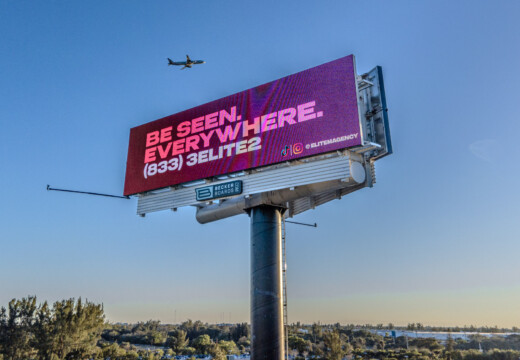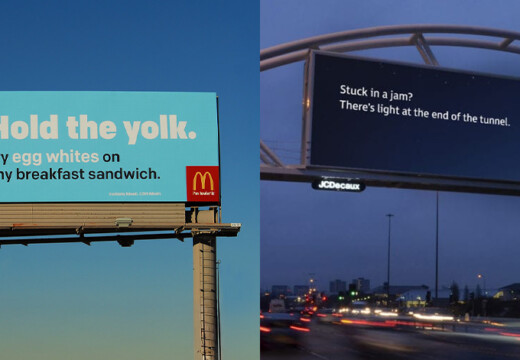Advertising on digital billboards can cost anywhere from $500 to $50,000 per month, depending on factors like location, viewer traffic, and timing. For example:
- Rural Areas: $500–$2,000/month
- Small/Mid-size Cities: $1,500–$5,000/month
- Major Markets (e.g., New York): $14,000–$40,000/month
Key factors affecting costs include location, seasonal demand (e.g., a 10% cost spike in Q4), and ad duration. Platforms like Blip offer flexible pay-per-display pricing starting at $0.01 per display, making it accessible for small businesses.
Quick Tips for Budgeting:
- Allocate 70–80% of your budget to ad space.
- Use 10–20% for creative design.
- Reserve 5–10% for campaign management.
- Save money by targeting off-peak times and repurposing existing designs.
| Feature | Digital Billboards | Static Billboards |
|---|---|---|
| Content Updates | Easily updated | Fixed design |
| Ad Space Sharing | Rotates multiple ads | Dedicated to one advertiser |
| Minimum Duration | As short as 1 day | Typically 4 weeks |
Use tools like Broadsign or Blip to track performance, adjust budgets, and improve ROI. For example, focusing on morning/evening commutes can increase engagement by 30% while cutting costs by 20%.
How Much Do Billboards Cost | Digital Billboard Advertising Strategy
Digital Billboard Cost Breakdown
Getting a clear picture of digital billboard costs is key to planning your advertising budget effectively.
What Affects Billboard Prices
Several factors influence the price of digital billboards. Location plays a big role – billboards in busy urban areas cost more due to higher visibility. Viewer traffic and timing also matter; campaigns in peak seasons or high-demand spots can drive prices up. Short-term campaigns often come with higher daily rates compared to longer commitments. Additionally, market demand and spot availability can cause prices to vary.
Knowing how digital billboards differ from static ones can also help you make smarter budgeting decisions.
Digital vs Static Billboard Costs
Digital billboards bring certain perks that can make them a better choice in some cases:
| Feature | Digital Billboards | Static Billboards |
|---|---|---|
| Content Updates | Easily updated | Fixed design |
| Space Sharing | Rotates multiple ads | Dedicated to one advertiser |
| Minimum Duration | As short as 1 day | Typically 4 weeks |
Platforms like Blip offer flexible pay-per-display pricing, starting at just $0.01 per display, making digital advertising an option for businesses of all sizes.
Price Ranges by Location Type
The cost of digital billboards varies significantly based on location:
| Location Type | Monthly Cost Range | Viewer Reach |
|---|---|---|
| Rural Areas | $500 – $2,000 | Lower traffic |
| Small/Mid-size Cities | $1,500 – $5,000 | Moderate traffic |
| Major Markets | $14,000+ | High traffic |
For example, in Los Angeles, monthly costs can range from $280 to $322,000, while Boston‘s rates span from $910 to $204,960 . Picking the right location ensures your investment reaches the audience you want and aligns with your campaign goals.
"The cost per month for an outdoor digital billboard can be $13,800 plus taxes in Q1, Q2, and Q3, and $15,180 plus taxes in Q4" .
Budget Planning and Goals
A well-defined budget and clear goals are essential for a successful digital billboard campaign. Here’s how to align your spending with your business objectives effectively.
Setting Measurable Goals
Tie your campaign goals to specific, actionable metrics. Here are some examples:
| Campaign Objective | Measurable Goal Example | Key Metrics to Track |
|---|---|---|
| Brand Awareness | Boost brand recall by 20% in 6 months | Impressions, audience reach |
| Lead Generation | Gain 500 qualified leads per month | Website visits, form submissions |
| Sales Growth | Increase sales by 15% in target areas | Revenue, conversion rates |
Once your goals are set, focus your budget allocation to achieve the best results.
Budget Distribution
Distribute your budget based on campaign priorities to get the most value. Here’s a general breakdown:
- Ad Space: The largest portion, around 70-80% of the total budget.
- Creative Design: Allocate 10-20% for designing eye-catching visuals.
- Campaign Management: Reserve 5-10% for monitoring and fine-tuning your campaign.
For example, if your total budget is $10,000, you might allocate $7,500 to ad space, $1,500 to design, and $1,000 to management.
ROI Calculation Methods
To estimate your campaign’s return on investment (ROI), focus on these key factors:
- Daily Traffic Count: How many people pass by your billboard.
- Average Conversion Rate: The percentage of viewers who take action.
- Customer Lifetime Value: The total revenue a customer generates over their relationship with your business.
Use this formula to calculate ROI:
ROI = (Revenue Generated - Campaign Cost) / Campaign Cost × 100
Tracking these metrics will help you measure success and make informed adjustments to future campaigns.
sbb-itb-2e2e93f
Money-Saving Tips for Billboard Campaigns
Making the most of your advertising budget isn’t just about spending less – it’s about ensuring every dollar delivers results. Here’s how to get the most value out of your billboard campaigns.
Using Automated Ad Buying
Platforms like Blip make programmatic ad buying affordable, with prices starting as low as $0.01 per display. These tools offer two major benefits:
| Feature | Benefit |
|---|---|
| Dynamic Pricing & Scheduling | Adjust costs and pay only for chosen time slots |
| Scalable & Data-Driven | Control spending without locking into contracts |
Picking Prime Spots and Times
Choosing the right locations and display times can stretch your budget further:
- Target High-Traffic Times: Focus on rush hours or seasonal traffic peaks to reach more people.
- Avoid Premium Periods: Book during Q1–Q3 to sidestep higher Q4 rates.
- Look for Growth Areas: Emerging neighborhoods or roads with increasing traffic can offer better value.
Reducing Design Costs
Save on design without compromising the impact of your billboard:
- Repurpose existing marketing materials for billboard use.
- Use templates for quick and affordable updates.
- Keep the message short and simple to minimize revisions.
- Opt for bold, high-contrast designs that stand out from a distance.
- Stick to a single, clear call-to-action to avoid confusion.
Tracking Results and Budget Updates
To run billboard campaigns successfully, you need to monitor performance and tweak budgets based on data. Using the right tools can help you make smarter decisions and get better returns.
Key Success Metrics
Digital billboards thrive on three main metrics:
| Metric | Description | Why It Matters |
|---|---|---|
| Views | Total number of people who see the ad | Tracks reach and visibility |
| Engagement | How audiences interact or respond | Measures the ad’s effectiveness |
| CPM (Cost per thousand views) | Expense to reach 1,000 viewers | Evaluates cost efficiency |
According to Broadsign’s analytics, keeping an eye on these metrics helps advertisers pinpoint the best times to run their ads and refine their strategies. For example, analyzing view counts at different times of the day can uncover the most effective display schedules to reach your audience. Once you know what to track, the right tools can make the process seamless.
Performance Tracking Tools
- Broadsign: Delivers real-time data on impressions and audience demographics.
- Effortless Outdoor Media: Provides detailed reports on ad performance and audience engagement.
- Blip: Tracks pay-per-play campaigns and offers insights into dynamic pricing.
"Effortless Outdoor Media found that focusing ads on morning and evening commutes increased engagement by 30% and cut costs by 20%."
Budget Adjustments Based on Data
Regular budget reviews and updates can lead to better results. Monthly check-ins often highlight trends and areas for improvement.
How to adjust effectively:
- Allocate more budget to time slots that perform well.
- Scale back spending in locations that underdeliver.
- Use dynamic pricing to take advantage of off-peak discounts.
- Update creative content based on what resonates with your audience.
For example, during Q4, when ad costs typically increase by 10%, you can focus on off-peak times or rely on your best-performing locations to stay within budget.
Steps for Better Billboard Budgeting
Planning a budget for digital billboards means aligning your location choices, ad format, and performance tracking with your campaign goals. Here’s how advertisers make the most of their investment through smart planning and execution.
Choosing the Right Locations
Focus on high-traffic areas that match your target audience. Mid-tier locations can offer great value, especially during peak seasons when premium spots can cost up to 10% more . Once you’ve nailed down the best locations, fine-tuning your campaign format and timing can help boost your return on investment.
Picking the Best Format and Timing
For short-term campaigns, digital billboards provide flexibility and better pricing options. On the other hand, static billboards are often more economical for long-term advertising. Pay attention to factors like seasonal trends, time-of-day audience behavior, and traffic patterns to schedule your ads effectively. A well-planned format and schedule can make a big difference in your campaign’s success.
Dividing Your Budget Wisely
Allocate 50-60% of your budget to top-tier locations. Use the rest for creative content, tracking tools, and seasonal tweaks. This approach helps you cover all bases while staying flexible enough to adjust based on performance.
Tracking Performance in Real-Time
Tools like Broadsign and Blip can help you monitor how your campaign is doing . These platforms provide insights into:
- Viewer engagement and patterns
- Performance at different times of the day
- Results from specific locations
- Cost-effectiveness of each ad placement
Use this data to make informed budget adjustments. If a location isn’t performing well, shift funds to better spots or try new creative ideas for improved results.
FAQs
How much does it cost to advertise on a digital billboard?
The cost of advertising on a digital billboard depends largely on location and market size. For instance, in major cities like New York City, premium spots can cost as much as $40,000 per month, while rates in suburban areas may start at just $500 monthly . Here’s a quick overview:
| Location Type | Monthly Cost Range | Notes |
|---|---|---|
| Rural Areas | $500 – $1,200 | Ideal for local businesses |
| Suburban Areas | $1,200 – $5,000 | Balanced pricing with good reach |
| Urban Areas | $5,000 – $15,000 | High-traffic areas, strong impact |
| Major Cities | $15,000 – $40,000 | Top-tier spots, maximum exposure |
Prices can also vary based on factors like seasonality and ad-sharing options. For example, rates often increase during high-demand periods like Q4. Platforms like Blip offer flexible pay-per-display models starting at just $0.01, making digital billboards an option for businesses with smaller budgets.
"Digital billboard costs can range from $10 per seven-second spot to over $10,000, depending on the billboard’s location, ad duration, and frequency" .
When setting your budget, keep these factors in mind:
- Traffic patterns and audience demographics: Choose locations with high visibility to your target market.
- Seasonal price changes: Rates often spike during busy advertising seasons.
- Time-of-day scheduling: Adjust timing to match peak audience activity.
- Audience engagement at specific locations: Ensure the location aligns with your campaign goals.


